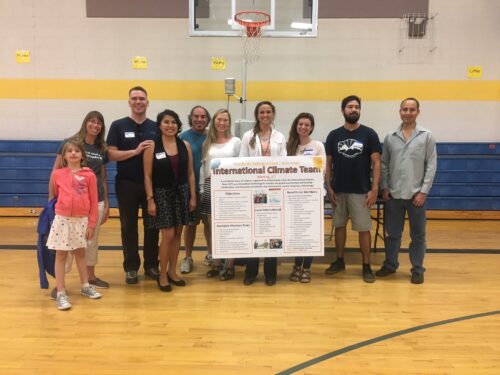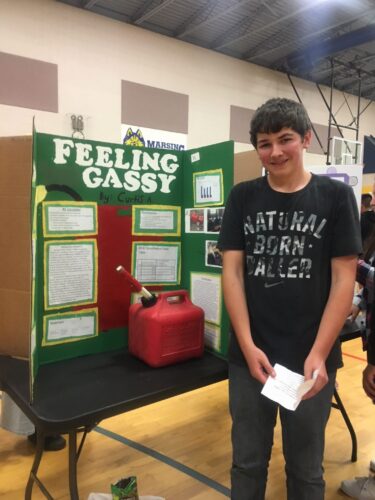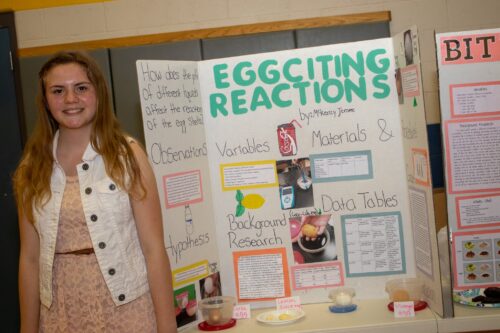
A team of Boise State scientists, students and professionals from the community went on the road recently. Their destination: the Marsing Middle School STEAM (science, technology, engineering, art and math) fair in Marsing, Idaho. This year, around 70 budding 8th grade scientists showed off their research projects. They lined the school gym with their displays, everything from data-heavy charts to petri dishes and scale models.
This was Boise State’s third year participating in the fair, said Pam Aishlin, a geologist and senior research associate in Boise State’s Department of Geosciences. Officially, Aishlin and the others from Boise State were acting as science fair judges. But their real purpose was outreach.
“Each year it’s a new group of 8th graders and we want to keep showing the Marsing students that they are important enough for us to come visit them, see their work, learn what interests them in STEM and encourage their efforts.”

The visit from Boise State “amps up the meaning of the STEAM fair,” said teacher and fair organizer Deirdra Little.
It can also help build a connection between the university and students at the rural school, many of whom come from economically challenged homes, or homes where parents haven’t gone to college. The students might not know how their own interests dovetail into upper-level studies. One of Little’s students, for example, chose to study owls and their prey for this year’s project. He talked with a member of the Boise State team, and learned that the university offers a program in raptor biology, said Little.
“It’s an incredible connection this town has with Boise State” she said.
Kate Markham, a Ph.D. student in Boise State’s Human-Environment Systems Research Center and the Ecology, Evolution, and Behavior Program, said attending the fair as a judge was “an absolute blast.” She was impressed that students so young were already thinking like scientists.
“They had to have a research question, go through three trials, consider limitations and potential sources for error,” said Markham. “I wasn’t doing anything like that in the 8th grade.”
She met one student who lives on a goat farm. The student’s project was making cheese — experimenting with different ingredients and variables.
“She told me she wants to be an engineer,” said Markham.

Public outreach is a growing priority in the Department of Geosciences, said Aishlin. It’s evolved over the past years from the occasional school visit to a current program in which junior high schools, with help from Boise State, design and build weather monitoring stations on school grounds, then compile scientific climate data. Each school also partners with a school in another country where students are also collecting weather data. The project is active in eight area schools, including Marsing Middle School. The school’s participation in the weather program was the first connection between the school and the university.
Aishlin hopes that Boise State’s outreach to schools like Marsing Middle School will help students develop skills they might not through the traditional school curriculum, and that they might choose to continue their studies at Boise State, and ultimately find a place in research or industry.
Aishlin remembers her first trip to Marsing three years ago. She met a student whose science project involved observations of his pet rabbit.
“He was kind of like the ‘last man standing,’ there in the gym with his rabbit at the end of the day,” said Aishlin.
“He asked us why we had come to Marsing to see them,” said Aishlin. “I told him, ‘Because we need you to be good at what you’re doing.'”